12 of the Most Beautiful Animals in the World
Beauty in the animal kingdom isn’t just for show—it’s a survival tool, a way to attract mates, or even a disguise. A bird’s brilliant feathers can signal strength, while a butterfly’s shimmering wings can startle a predator just long enough for an escape. Yet, with some animals, you almost can’t help but sit back and admire how they look. Let’s check out some of the most beautiful animals on the planet.
Mandarin Duck

Credit: Wikimedia Commons
Some birds are pretty. Then there’s the Mandarin Duck, which looks like it was designed by an overachieving painter who refused to stick to one color palette. Male ducks have deep orange “sails” on their backs, some iridescent green, and bold white stripes that make them impossible to miss. They tend to keep to themselves, often nesting in trees near quiet ponds.
Scarlet Macaw
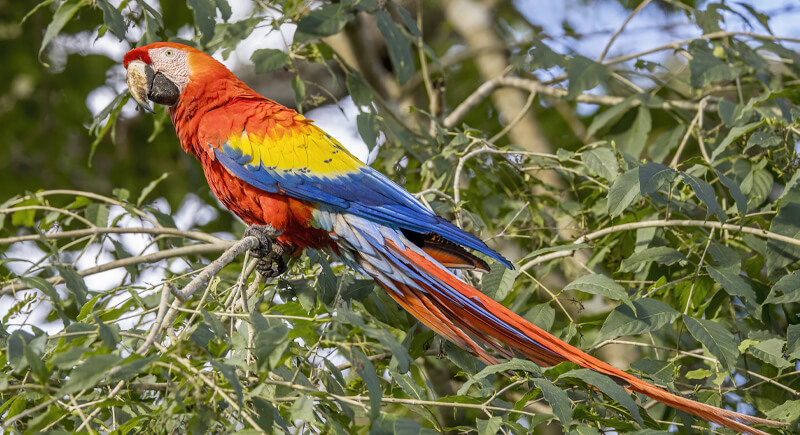
Credit: Wikimedia Commons
There’s a reason the Scarlet Macaw has been a symbol of the rainforest for centuries. Its striking red body, blue and yellow wings, and the personality to match make it one of the most charismatic birds in the wild. These parrots can live up to 75 years and are smart enough to learn tricks, mimic voices, and even throw a little attitude when they feel like it. They also mate for life, which means if a Scarlet Macaw picks a partner, they’re in it for the long haul.
Blue Morpho Butterfly
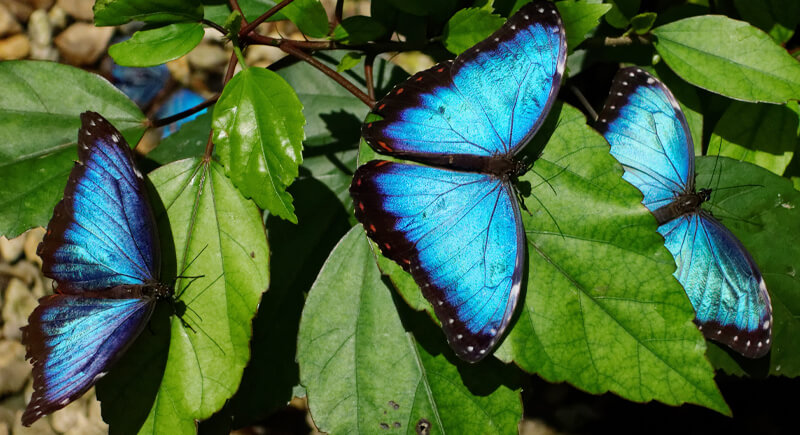
Credit: Wikimedia Commons
The Blue Morpho Butterfly is one of the biggest butterflies in the world, and its color isn’t actually from pigment—it’s the way light reflects off microscopic scales on its wings. The moment it lands, though, that flashy blue disappears, and all you see is the dull brown underside. One second it’s glowing, the next it’s gone, like some kind of illusion.
Andalusian Horse
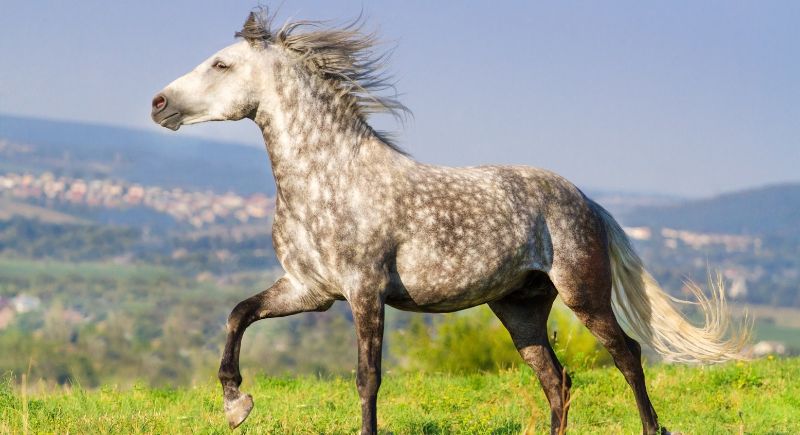
Credit: Canva
Some animals carry themselves like they know they’re special. The Andalusian Horse is one of them. This breed has been around for centuries, and was originally prized by Spanish royalty for its strength, intelligence, and ability to battle maneuvers with grace. Today, you’re more likely to see them performing in equestrian shows with flowing manes and high-stepping gaits.
Arctic Fox
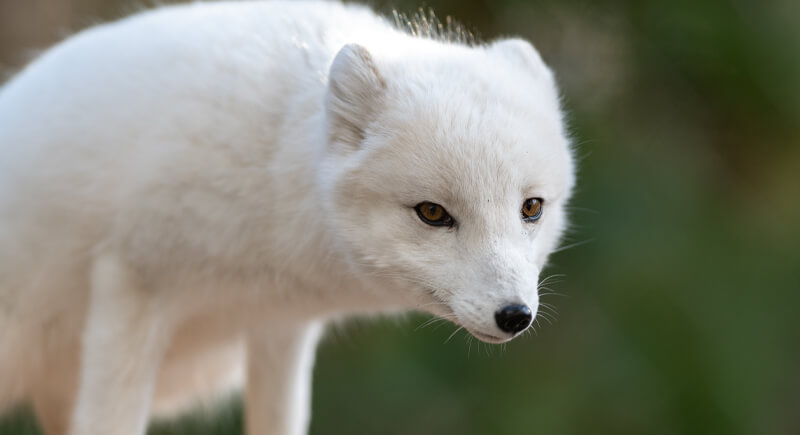
Credit: Wikimedia Commons
If survival were an art form, the Arctic Fox would be a master. When winter rolls in, its fur thickens and turns pure white to blend into the snow. But as soon as summer arrives, it sheds that fluffy coat for a brownish-gray one to match the tundra. Its paws are like built-in snowshoes, and it can hear prey moving beneath the ice before pouncing with pinpoint accuracy.
Caracal
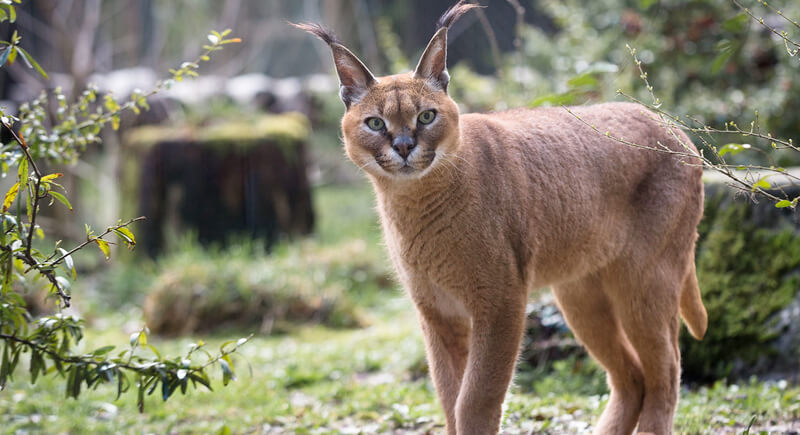
Credit: flickr
Everything about the Caracal is built for speed and precision. Its powerful back legs can launch it ten feet into the air to snatch birds right out of the sky. It also has a sleek, reddish coat that makes it nearly invisible in the tall grasses where it hunts. And then there are those ears—tall, black-tipped, and covered in tufts that flick and twitch with every sound. The ancient Egyptians admired them so much they carved them into their artwork.
Victoria Crowned Pigeon
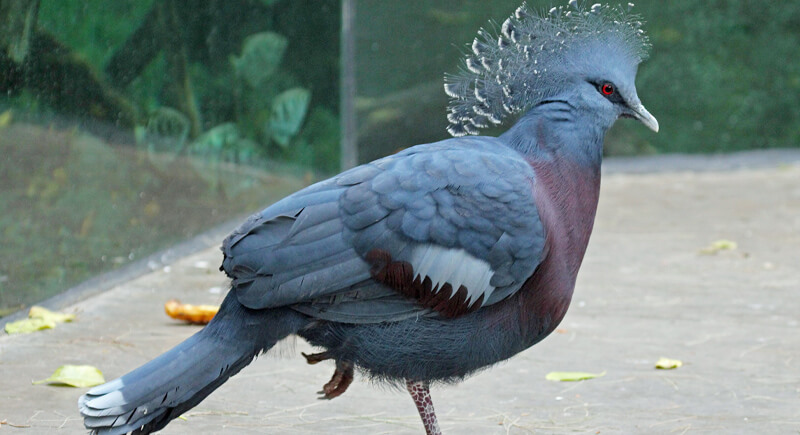
Credit: Wikimedia Commons
Most people associate pigeons with gray city birds, but the Victoria Crowned Pigeon is something else entirely. This bird is native to New Guinea, with a deep blue-gray body, a rich maroon chest, and a striking lace-like crest atop its head. It’s one of the largest pigeon species in the world, about the size of a small turkey. Despite their regal appearance, they’re ground-dwelling birds and forage for fruit and seeds in the dense forests.
Mandrill
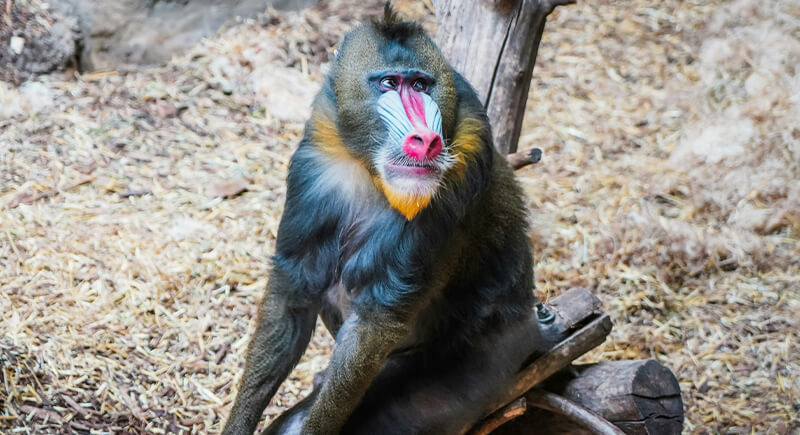
Credit: unsplash
You’d think it’d be more flavorful for monkeys to blend in with the trees. Yet, the Mandrill looks like someone took a set of neon markers to its face. Males are painted in shocking blues and reds, and their colors only get more vivid as they age. The brightest males even tend to be the leaders of their groups. But don’t let the wild looks fool you. Despite their clown-like faces, Mandrills are incredibly powerful, with sharp canines longer than a lion’s.
Okapi
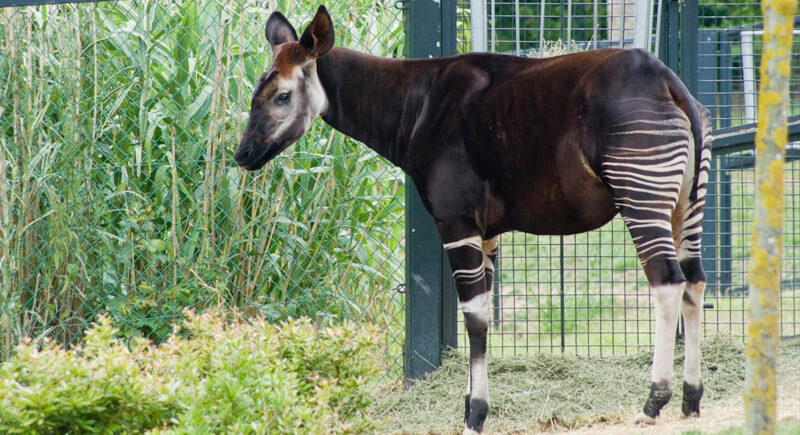
Credit: Wikimedia Commons
Nature loves a good optical illusion, and the Okapi is proof. At first glance, it looks like a cross between a zebra and a deer, but it’s actually the closest relative of the giraffe. It has the same long tongue, capable of grabbing leaves with impressive precision. Its deep brown coat is so velvety it seems to absorb light, and those striped legs are perfect camouflage for disappearing into the dense rainforests.
Glasswing Butterfly
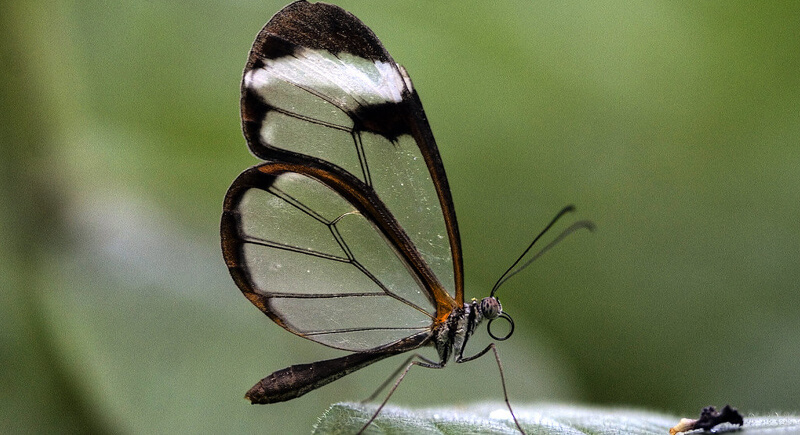
Credit: flickr
Butterflies usually rely on colors to make a statement, but the Glasswing Butterfly takes the opposite approach—its wings are completely transparent, like delicate panes of glass. This natural invisibility cloak makes it nearly impossible for predators to spot. When it does catch the light, there’s only a faint shimmer hints at its presence.
Flamingo
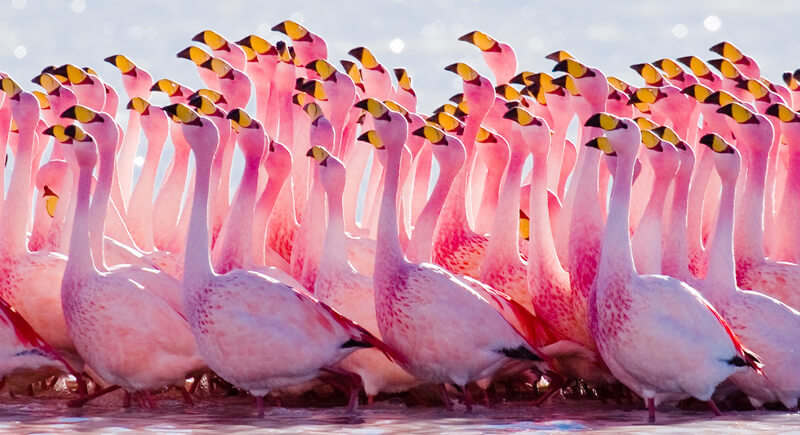
Credit: flickr
Flamingos stand on one leg for hours, sift through muddy water for tiny shrimp, and somehow manage to keep their bright pink feathers looking flawless. But they aren’t born pink. That color comes from their diet, meaning if a flamingo isn’t eating enough carotenoid-rich food, it fades to a pale shade of white. In short, flamingos are what they eat.
Red Panda
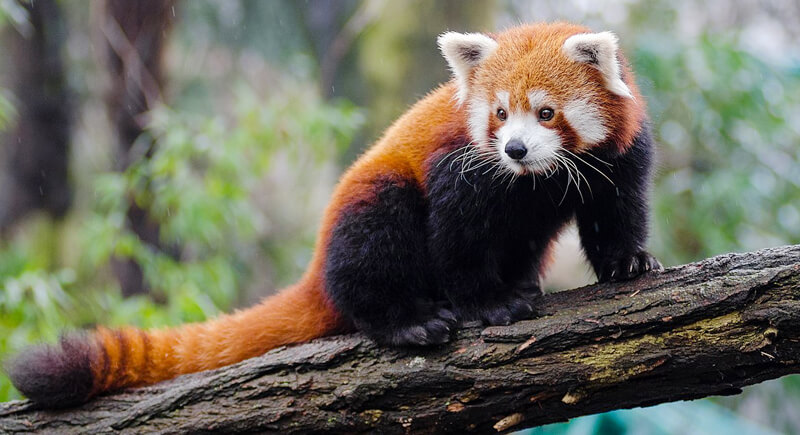
Credit: Wikimedia Commons
The Red Panda has been acquiring quite some traction among animal lovers. It looks like a cross between a raccoon and a fox, with a round face, fluffy tail, and an expression that always seems a little surprised. Unlike giant pandas, these little guys spend most of their time in trees, expertly navigating the branches while munching on bamboo.
Kingfisher
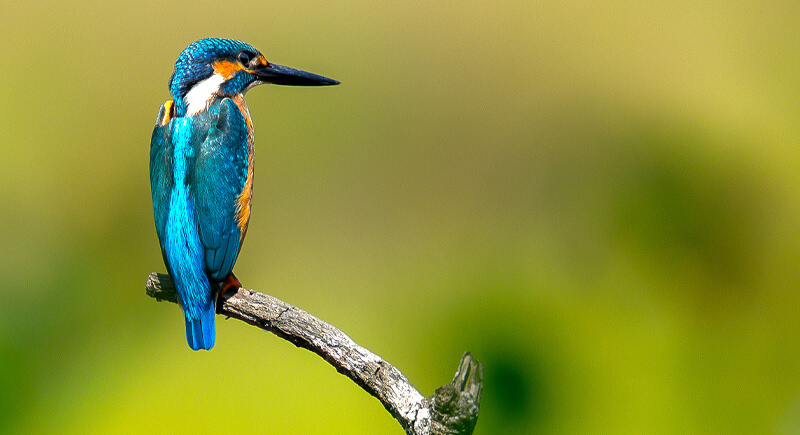
Credit: Wikimedia Commons
Despite its small size, the Kingfisher is an excellent hunter. It has a dagger-like beak, hovers over a river, eyes locked onto a fish below, and then—bam!—it dives in, snatching its prey with pinpoint accuracy. You’ll notice the feathers gleam in shades of blue and orange and flash like a jewel every time it zips past. Some say these birds are so good at what they do that they’ve even inspired Japanese bullet train designs for their aerodynamic efficiency.
Snowy Owl
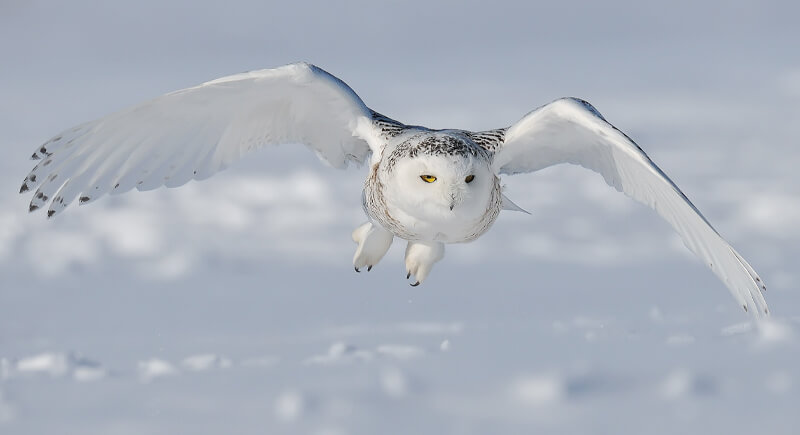
Credit: Wikimedia Commons
The Snowy Owl is built for the frozen Arctic. Its thick white feathers act as both a winter coat and the perfect camouflage against the snow. It also has sharp yellow eyes that watches for the slightest movement, ready to swoop down on an unsuspecting meal. This bird practically thrives in one of the harshest places on Earth.
Black Swan
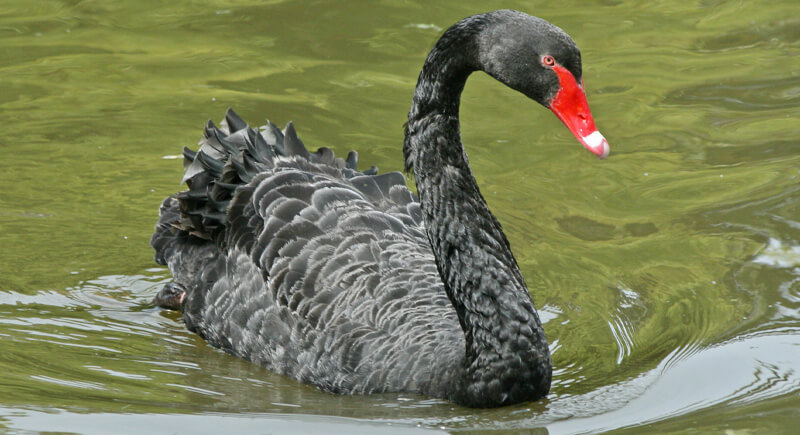
Credit: Wikimedia Commons
In the 1600s, European explorers believed all swans were white—until they arrived in Australia and saw black swans for the first time, which challenged everything they thought they knew. Their deep black feathers contrast dramatically against the water, and their red beaks are just as beautiful. Despite their stereotype as gentle creatures, Black Swans are fiercely protective parents and will chase off anything or anyone that gets too close to their young.